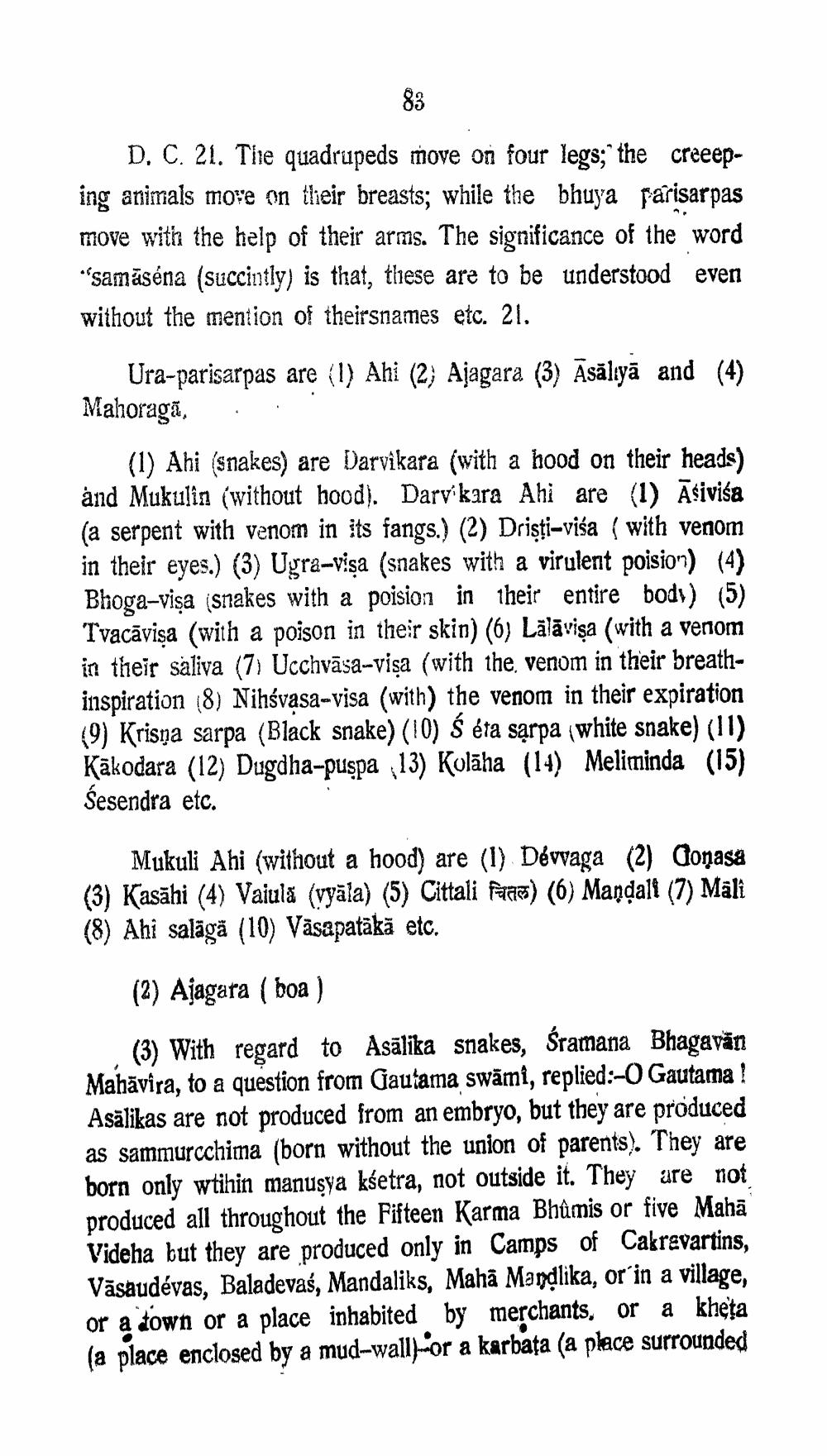________________
83
D. C. 21. The quadrupeds move on four legs; the creeeping animals move on their breasts; while the bhuya parisarpas move with the help of their arms. The significance of the word "samaséna (succintly) is that, these are to be understood even without the mention of theirsnames etc. 21.
Ura-parisarpas are (1) Ahi (2) Ajagara (3) Asaliyā and (4) Mahoraga,
(1) Ahi (snakes) are Darvikara (with a hood on their heads) and Mukulin (without hood). Darv kara Ahi are (1) Asivisa (a serpent with venom in its fangs.) (2) Dristi-viśa (with venom in their eyes.) (3) Ugra-visa (snakes with a virulent poision) (4) Bhoga-visa (snakes with a poision in their entire body) (5) Tvacāviṣa (with a poison in their skin) (6) Lālāviṣa (with a venom in their saliva (7) Ucchvāsa-viṣa (with the, venom in their breathinspiration (8) Nihśvasa-visa (with) the venom in their expiration (9) Krisna sarpa (Black snake) (10) Ś éta sarpa (white snake) (11) Kākodara (12) Dugdha-puspa (13) Kolaha (14) Meliminda (15) Śesendra etc.
Mukuli Ahi (without a hood) are (1) Dévvaga (2) Gonasa (3) Kasahi (4) Vaiulă (vyāla) (5) Cittali fa) (6) Maṇḍali (7) Mali (8) Ahi salägä (10) Vāsapatākā etc.
(2) Ajagara (boa)
(3) With regard to Asālika snakes, Śramana Bhagavan Mahavira, to a question from Gautama swami, replied:-O Gautama! Asālikas are not produced from an embryo, but they are produced as sammurcchima (born without the union of parents). They are born only wtihin manusya kśetra, not outside it. They are not produced all throughout the Fifteen Karma Bhumis or five Maha Videha but they are produced only in Camps of Cakravartins, Vasaudévas, Baladevaś, Mandaliks, Maha Mandlika, or ́in a village, a kheta or a town or a place inhabited by merchants, or (a place enclosed by a mud-wall)-or a karbata (a place surrounded




